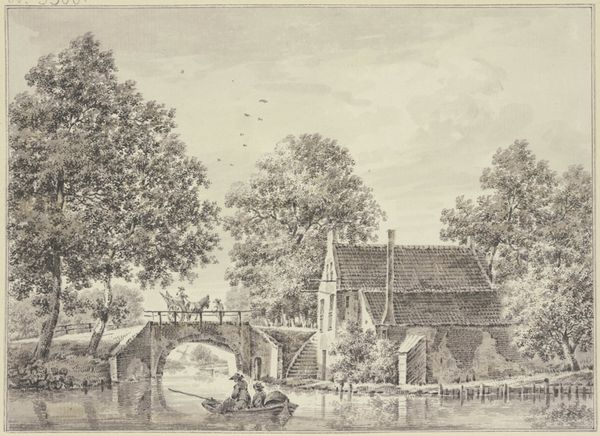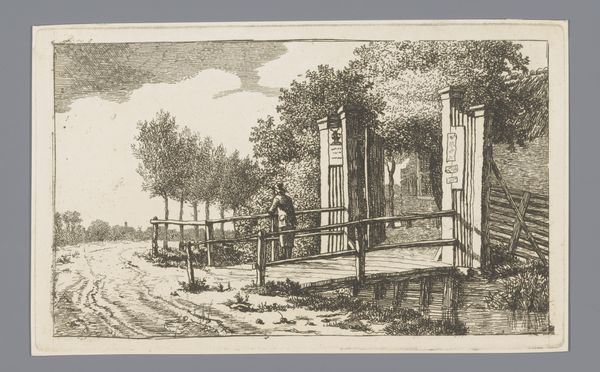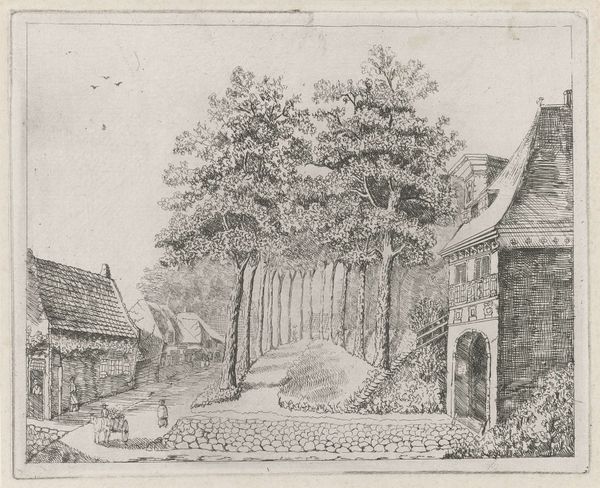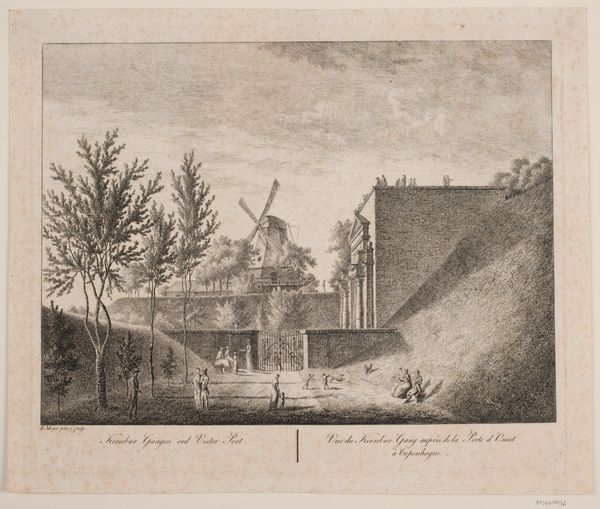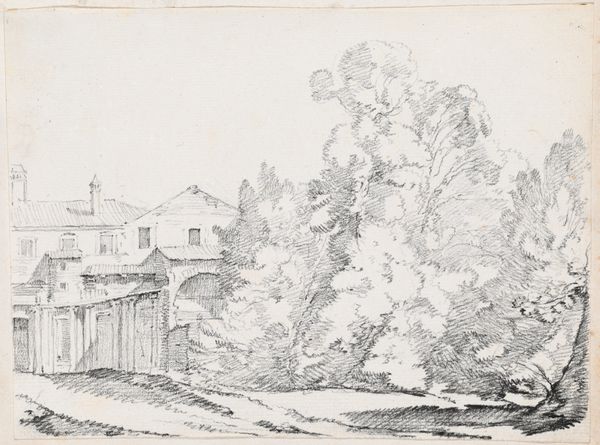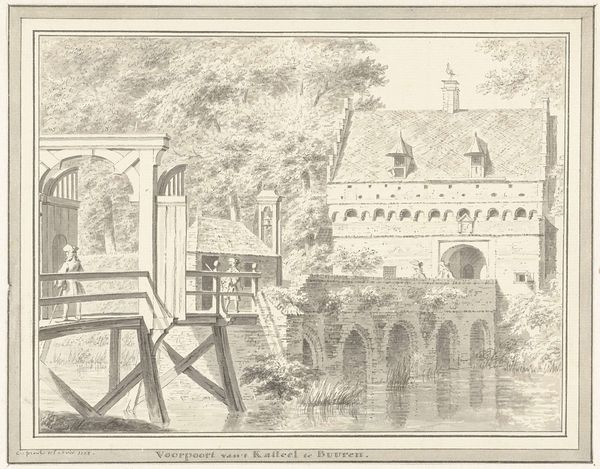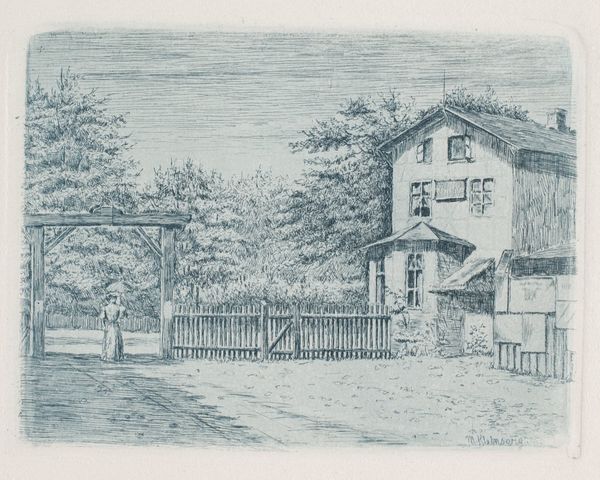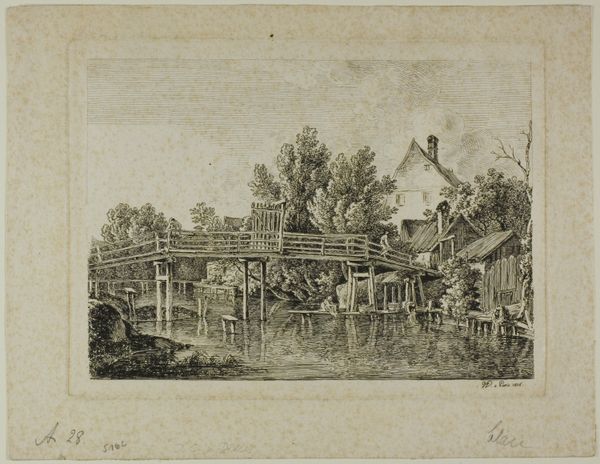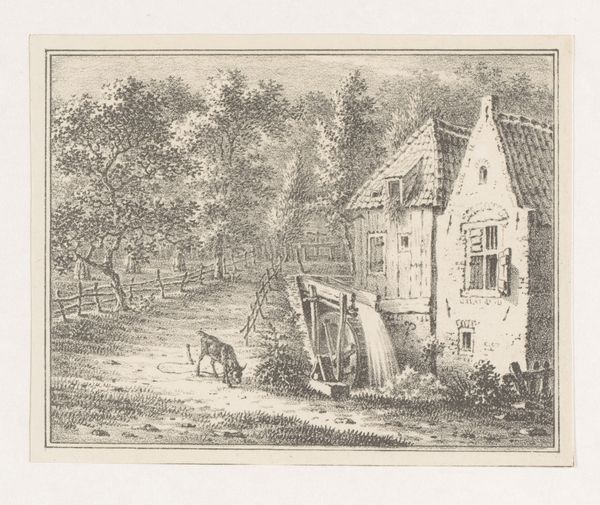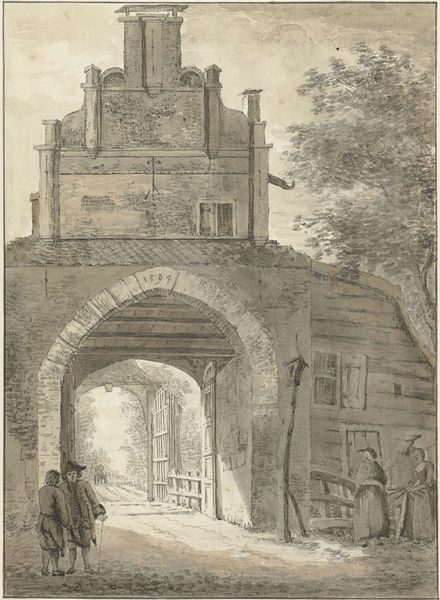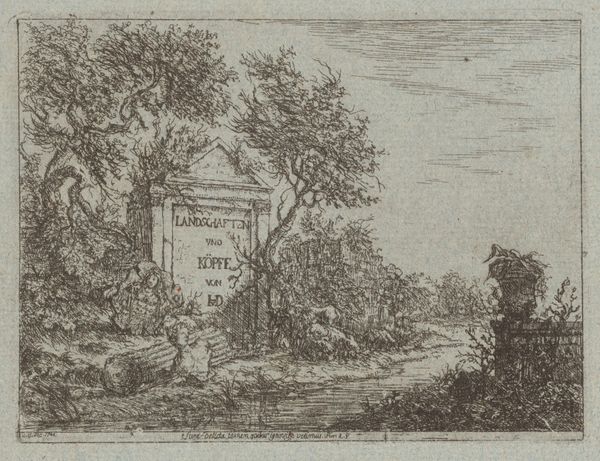
drawing, print, etching
#
drawing
#
16_19th-century
# print
#
etching
#
landscape
#
romanticism
#
line
#
realism
Dimensions: 162 mm (height) x 221 mm (width) (bladmaal)
Curator: This etching from 1834 by Thorald Læssøe is titled "Broparti fra Kastellet," depicting a section of the Citadel bridge. It’s currently held at the SMK, the National Gallery of Denmark. Editor: My initial reaction is that it feels very… precise. All those tiny lines creating depth and texture. It's not just a pretty scene, it feels like an architectural study almost, the focus on the bridge structure itself. Curator: Indeed, Læssøe's skill with the etching technique allows for meticulous detail. Consider how the materials themselves contribute: the acid etching the metal plate, the pressure of the press creating the final print. It speaks to a specific production process, connecting art with skilled labor. Editor: From an iconographic viewpoint, bridges are traditionally transition symbols – a crossing over. The bridge in Læssøe’s piece isn't simply a practical means of getting from one place to another; it might also represent moving from a more confined, military space of the Citadel toward possibilities in the open landscape beyond. Curator: That's interesting, because I also see the etching participating in the burgeoning culture of print consumption. Images of places became readily available; think about how that influenced ideas of national identity, landscape, even property, through mass production. Editor: Notice how the lone figure of the guard echoes the structural lines of the bridge, linking themes of defense with that romantic sensibility for landscapes. The guard also gives us a hint that the space is watched. Curator: And the deliberate placement of this lone figure gives us a perspective to relate to, he becomes the one traversing space – making his way, passing from one state to another, under structures created through industrial processes. This relates to changing economies, military reforms, and landscape developments. Editor: It is evocative, this blending of the industrial with something more traditional, pastoral maybe. I come back to the idea of symbolic bridging. Not just locations but maybe periods as well. Curator: Perhaps thinking of the conditions through which this image comes to us can shift how we approach reading its iconography too. I find thinking about material and making is another pathway toward historical inquiry. Editor: Indeed. Looking more deeply reveals just how powerfully symbolic even what may appear as documentation of something specific in that era actually is.
Comments
No comments
Be the first to comment and join the conversation on the ultimate creative platform.
